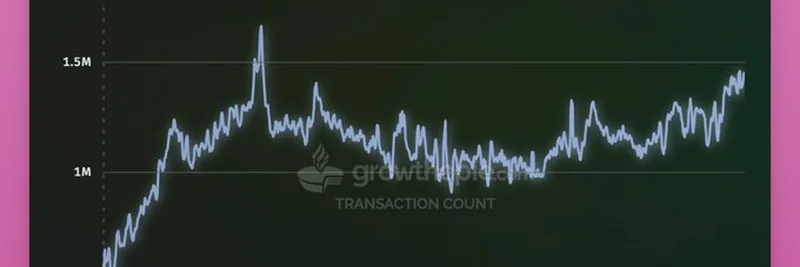Hey there, crypto enthusiasts! If you’ve been keeping an eye on the Ethereum (ETH) market, you’ve probably noticed some buzz about a potential bull run in 2025. A recent thread by Ignas | DeFi on X (@DefiIgnas) dives deep into the onchain metrics that could signal whether ETH is ready to soar. Let’s break it down in a way that’s easy to digest, even if you’re new to the blockchain world.
What’s Driving the Ethereum Hype?
Ignas points out that ETH bulls are finally bringing a strong narrative to the table. But narratives alone won’t push the price sky-high—solid onchain data is the key. He highlights three critical metrics to watch:
- Transaction Count: The first chart shows Ethereum’s transaction count from 2020 to 2025. After a sharp spike in 2021, the numbers have flattened out, with a slight uptick recently. Ignas wants to see this metric break its three-year slowdown to confirm a bullish trend.
- Active Addresses: The second chart tracks daily active addresses (unique users sending or receiving ETH). Like transactions, this has seen a dip after 2021’s peak, with a gradual rise in 2025. More active users could mean more network activity—and potentially higher prices.
- Deflationary Pressure: The third image reveals a supply change dashboard. Over the last 30 days, 6,000 ETH was burned (removed from circulation), but 79,000 ETH was issued. This means ETH is still inflationary, not deflationary, which is a hurdle for price growth.
Why These Metrics Matter
Think of Ethereum as a busy highway. The more cars (transactions) and drivers (active addresses) on it, the busier the network. A higher transaction count and more active addresses signal growing demand, which could drive ETH’s value up. However, for ETH to become deflationary—where more coins are burned than issued—the network needs to scale up significantly. This is where Layer 1 (L1) improvements come into play.
The Challenge: Scaling Layer 1
Ignas suggests that Ethereum’s L1 (the main blockchain) needs a boost. Many decentralized apps (dApps) are moving to Layer 2 (L2) solutions like Arbitrum or Optimism to handle transactions faster and cheaper. While this helps scalability, it reduces activity on the mainnet. To fuel a bull run, Ignas believes Ethereum needs:
- More dApps on Mainnet: New applications could bring back activity to L1.
- Increased Network Activity: More users and transactions are essential.
- L1 Scaling: Upgrades to the main blockchain to handle higher demand.
What’s Next for Ethereum?
The community’s buzzing with ideas. Some suggest shifting focus from L2 to L1 development, while others propose new dApps or even tech upgrades like moving from the Ethereum Virtual Machine (EVM) to something like Risc Zero. Ignas isn’t alone in his cautious optimism—replies to his thread show a mix of excitement and skepticism. One user even joked that people prefer narratives over facts, highlighting the challenge of balancing hype with data.
Final Thoughts
As of July 14, 2025, Ethereum’s onchain metrics suggest potential, but there’s work to be done. If transaction counts rise, active addresses grow, and the network becomes deflationary, we could see a “violent upward move” as Ignas puts it. For now, keep an eye on these charts and join the conversation on meme-insider.com to stay updated on the latest crypto trends!
What do you think—will Ethereum scale its L1 and kick off a bull run? Drop your thoughts in the comments!


